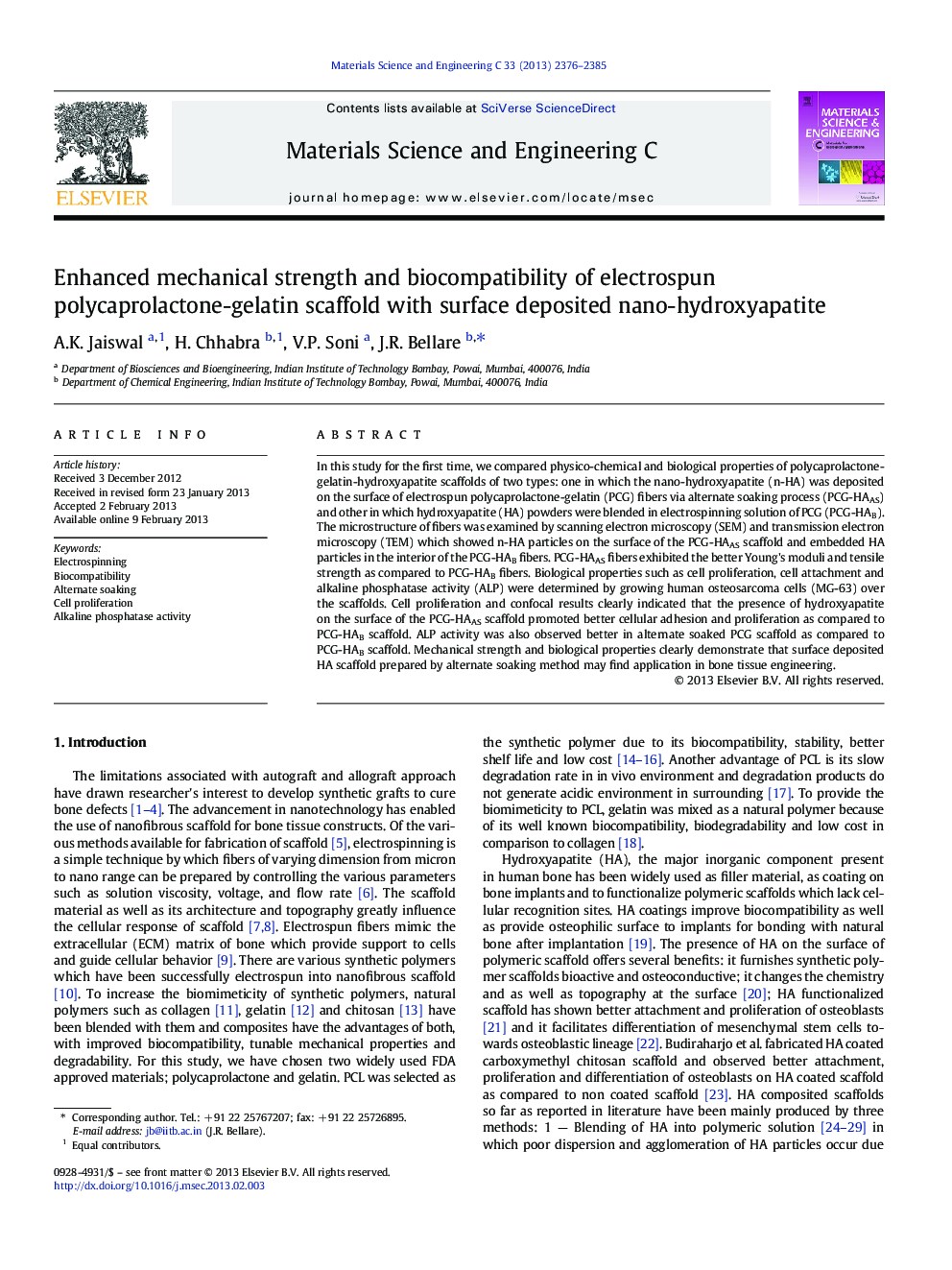| Article ID | Journal | Published Year | Pages | File Type |
|---|---|---|---|---|
| 1429449 | Materials Science and Engineering: C | 2013 | 10 Pages |
In this study for the first time, we compared physico-chemical and biological properties of polycaprolactone-gelatin-hydroxyapatite scaffolds of two types: one in which the nano-hydroxyapatite (n-HA) was deposited on the surface of electrospun polycaprolactone-gelatin (PCG) fibers via alternate soaking process (PCG-HAAS) and other in which hydroxyapatite (HA) powders were blended in electrospinning solution of PCG (PCG-HAB). The microstructure of fibers was examined by scanning electron microscopy (SEM) and transmission electron microscopy (TEM) which showed n-HA particles on the surface of the PCG-HAAS scaffold and embedded HA particles in the interior of the PCG-HAB fibers. PCG-HAAS fibers exhibited the better Young's moduli and tensile strength as compared to PCG-HAB fibers. Biological properties such as cell proliferation, cell attachment and alkaline phosphatase activity (ALP) were determined by growing human osteosarcoma cells (MG-63) over the scaffolds. Cell proliferation and confocal results clearly indicated that the presence of hydroxyapatite on the surface of the PCG-HAAS scaffold promoted better cellular adhesion and proliferation as compared to PCG-HAB scaffold. ALP activity was also observed better in alternate soaked PCG scaffold as compared to PCG-HAB scaffold. Mechanical strength and biological properties clearly demonstrate that surface deposited HA scaffold prepared by alternate soaking method may find application in bone tissue engineering.
► PCG-HA scaffold was prepared by two methods: blending and by alternate soaking. ► Uniform n-HA was found at the nanofiber surface with the alternate soaking method. ► PCG-HAAS scaffold showed better mechanical strength compared to PCG-HAB fibers. ► Cell adhesion, proliferation and ALP activity were also better in PCG-HAAS.
